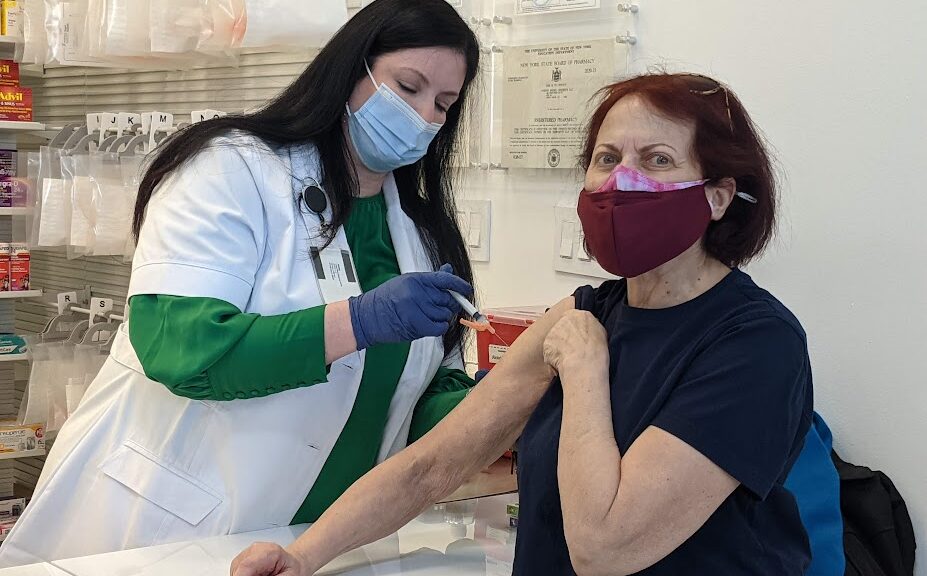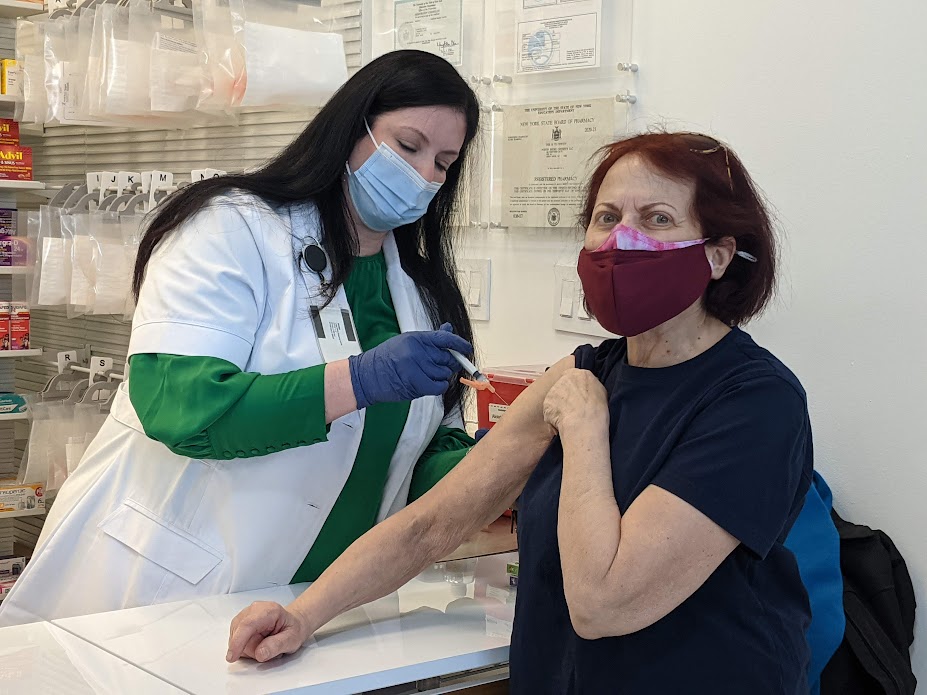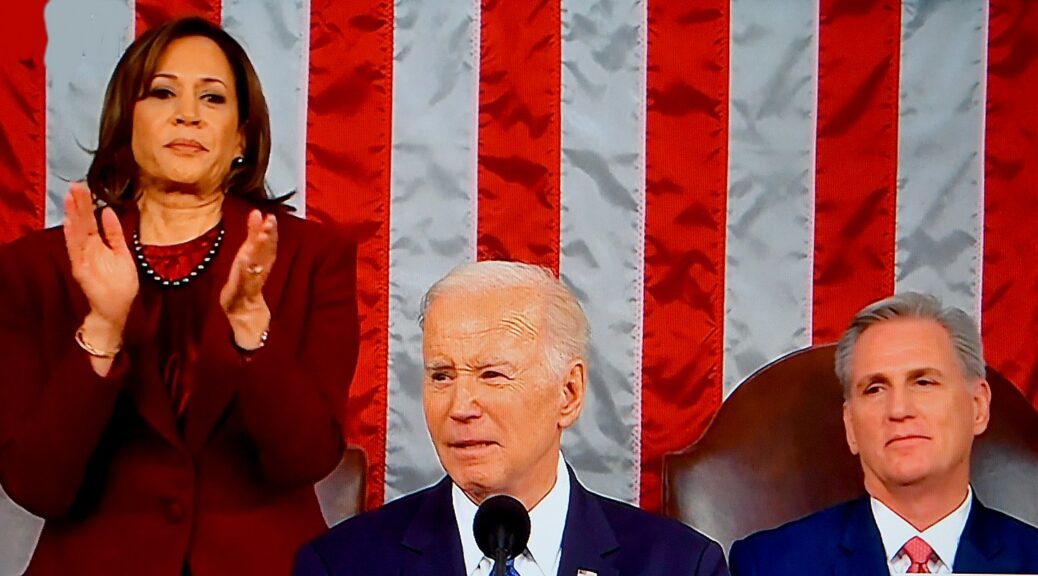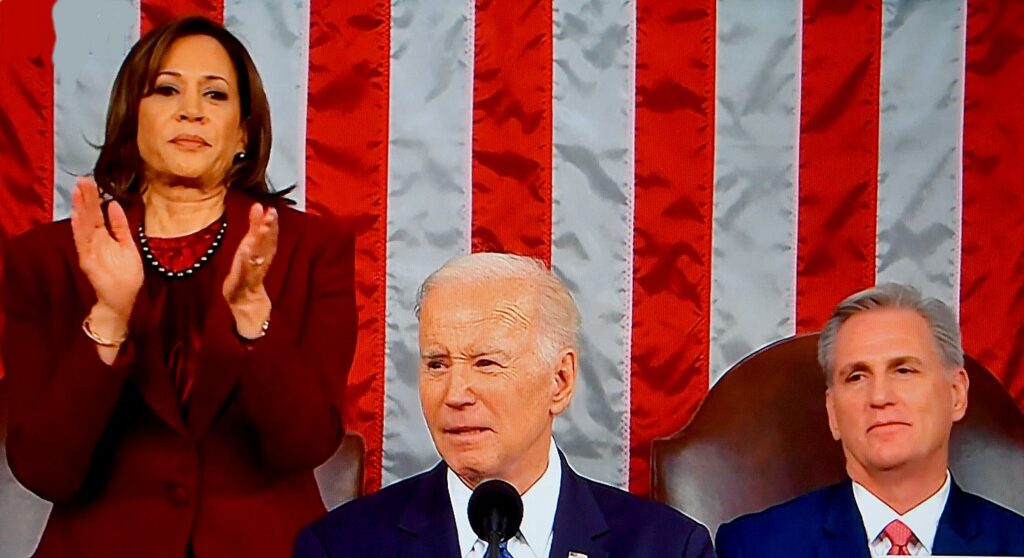From the White House:
In Lusaka, Zambia, in response to Vice President Kamala Harris’s call for the private sector to promote and enhance climate resilience, adaptation and migration across Africa, the private sector made over $7 billion in new commitments. Additionally, the U.S. Government is announcing new federal funding and initiatives to expand access to climate information services and enhance climate resilience and adaptation. These new investments and initiatives will generate significant economic benefits while addressing African nations’ pressing needs resulting from the climate crisis, including food security challenges, by helping to lift-up over 116 million farmers and promote climate-smart agriculture. These announcements demonstrate America’s commitment to partnering with African people and governments, alongside the private sector, to help the continent meet its climate adaptation and resilience, clean-energy access, and just energy transition goals.
African nations have historically contributed relatively little to the climate crisis but are disproportionally harmed by its impacts. The Biden-Harris Administration recognizes that to address the climate crisis in Africa, we must work together, building new coalitions between the U.S. government, African governments, civil society, and the private sector.
Private Sector Investments
The Vice President, as part of her call for the private sector to promote climate resilience, adaptation, and mitigation across Africa, is announcing the following 27 private sector and philanthropic commitments to support farmers, climate-smart agriculture, sustainability, clean energy, and clean transportation.
Supporting Farmers and Climate-Smart Agriculture
- Pula, an agricultural insurance and technology company, is responding to the President’s Emergency Plan for Adaptation and Resilience (PREPARE) Call to Action and has committed to increase their coverage to 100 million small holder farmers across sub-Saharan Africa by providing up to $20 billion in insurance coverage by 2026. The smallholder farmers pay $20 for $200 dollars of insurance coverage. Insuring previously uninsured farmers can generate a direct positive impact for farming households across Africa, helping to secure their livelihoods by protecting them against the risk of financial losses due to climate-related events.
- Mastercard, a payment and technology company, is responding to the PREPARE Call to Action and has committed to increase access of its Community Pass platform to a total of 15 million farmers in Africa by 2027 to spur economic output and opportunity. Community Pass is a shared interoperable digital platform that provides a commercially sustainable approach to scaling service delivery and increasing access to critical services including healthcare, agriculture, and micro-commerce, for individuals in underserved, remote, and frequently offline communities. Community Pass enables farmers to command higher prices by facilitating increased access to buyers and creating greater price transparency. Community Pass also enables access to inputs, advisory, and other financial service providers. Together, these services improve a smallholder farmer’s agricultural practices, resulting in a more resilient, sustainable, and productive farming system.
- SunCulture, an Africa-focused solar irrigation company, commits to mobilizing $100 million in private capital and $40 million in grant/subsidy funding to deploy smallholder farmer solar irrigation to address food security in Kenya by 2028. SunCulture expects to install 274,000 solar irrigation systems on smallholder farms, reaching nearly 1.1 million direct beneficiaries, creating 411,000 jobs, growing 7.1 million metric tons of food, and generating $5 billion of increased incomes for smallholder farmers.
- One Acre Fund, an agricultural service provider to support African smallholder farmers in partnership with local governments, has committed to raise and invest a $100 million fund to help 1 million farmers plant one billion trees by 2030. Smallholder farmers plant trees to harvest branches and wood, improve the farm environment, and sequester carbon.
- Touton SA, an agro-industrial actor, is leading a consortium expected to commit $79.2 million into sourcing sustainable cocoa by 2025 and benefit an estimated 150,000 Ghanaians. They are supported by Palladium through the Partnership for Forests (P4F) project, and will develop and pilot a landscape-wide governance model in Juaboso-Bia landscape to promote sustainable and deforestation-free cocoa production while protecting forests earmarked as a hotspot intervention area.
- AlphaTalentsAfrica (ATA), an investment company supporting agribusiness ecosystems in Africa, has committed $50 million in agrifood industry investments in Africa over the next 20 years. ATA has committed $9 million for its first investment from the $50 million in a manufacturer of quinine-based ingredients for the beverage industry and of medicinal plant-based pharmaceutical products headquartered in the Democratic Republic of Congo.
- AgDevCo, a specialist investor in African agribusiness, is investing $10 million in sustainable forestry through New Forests Company. New Forests Company is one of the leading forestry companies in East Africa, with more than 30,000 hectares of plantations in Uganda and Tanzania. The company also supports over 6,000 smallholder farmers through the company’s outgrower program. All timber is Forest Stewardship Council (FSC) certified, and the plantations sequester significant volumes of carbon, which will increase further as the company and outgrower forestry stands mature.
- Switch Bioworks, a living fertilizer company, has committed $10 million to create sustainable biofertilizers in Africa over the next three years. Successful biofertilizer has the potential to triple per-acre productivity at less than one-tenth the greenhouse gas emissions of synthetic fertilizer.
- Agrinfo Company Limited, an aerial imagery and artificial intelligence company that helps farmers make informed crop decisions, has committed $2 million to create a network of 3,000 drone pilots to collect and analyze data that will help 1 million farmers in Africa by 2030.
- Corteva, an agriscience company dedicated to agriculture, has committed $250,000 to support climate smart post-harvest solutions in Ethiopia for 230,000 smallholder farmers and recently committed $100,000 for research that is applying gene-editing techniques to create a parasite-resistant “smart” sorghum by 2025. These collaborations will increase the incomes and food security of smallholder farmers in Africa as the threats of climate change, pest, and disease continue to grow.
- Land O’ Lakes Venture 37, the non-profit international development affiliate of the member-owned agricultural cooperative, is working through the Dairy Nourishes Africa portfolio of projects, founded by the Chicago-based Global Dairy Platform and in partnership with the Boston-based Bain & Company. This unique 15-to-20-year public/private partnership will drive inclusive climate-smart economic development in the dairy sector of four East African countries, reaching more than 10 million resource-poor, opportunity-constrained stakeholders. The projects aim to feed 40,000 children daily and double the income of 250,000 commercial-oriented farmers in the next 10 years.
- McCormick, a global flavor company headquartered in the U.S., is responding to the PREPARE Call to Action, and through its Grown for Good framework, is investing in the resilience of over 30,000 farmers across their supply chains. They have set an ambitious 100% sustainable sourcing goal for their top five branded ingredients for 2025 and have already achieved 100% sustainability for their vanilla supply chain sourced from Madagascar.
Spurring Sustainability, Clean Energy, and Clean Transportation
- African Parks, a non-profit conservation organization that rehabilitates and manages national parks in partnership with governments and local communities across Africa, has committed to increase its management of 8 new parks by 2030, taking their number to 30. To meet this 30 Parks by 2030 goal, African Parks is committing to raise and invest an additional $1.25 billion in Africa over the next 7 years. This will include a mix of already raised funds in addition to future fundraising.
- Cambridge Industries Ltd (CIL), an engineering, design, procurement, and construction firm focused on renewable energy projects throughout Africa, has committed $950 million to decarbonizing waste management in Kinshasa, anchored by four Waste-to-Value Industrial Parks for the Circular Economy. The universal waste management project, which will utilize anaerobic digesters for waste-to-energy and high-quality recycling scheme is expected to provide waste collection and disposal services to over 3.5 million households, electricity to 400,000 households, and create employment opportunities for more than 35,000 residents by 2030.
- ABD Group, a project development firm focused on Africa, commits to finance and operationalize an electrification project with Tanzania Electric Supply Company Limited (Tanesco) by expanding two combined cycle gas power projects to produce 900 MW of electricity through new power plants to expand energy access in a project valued at $800 million dollars. ABD Group has also developed and secured financing to build five wastewater treatment plants in Cote d’Ivoire valued at $52 million. Construction will start in the second quarter of 2023 on five wastewater treatment plants and a pumping station. This will bring wastewater treatment to social housing communities and benefit a projected 40,000 households.
- Combustion Associates Inc (CAI), a power plant equipment supplier company specializing in gas turbine power generation packages, has committed to $600 million to reduce vented greenhouse gas emissions through their Flare Gas Elimination Program in Nigeria by 2025.
- SAGLEV Inc, a vehicle assembly, manufacturing, and distributing company, is committing $600 million in electric vehicle assembly plants for Ghana – with service to Cote D’Ivoire, Nigeria, and South Africa by 2027. This will create 150 direct jobs and up to 25,000 indirect jobs by 2027.
- The Emissions Capture Company (ECCO), an emissions management platform utilizing AI-driven solutions that recycle industrial emission and waste into valuable compounds to support the green economy, commits at least $550 million to reduce emissions and plastic waste from Nestlé sites in Africa between 2023 and 2029 by deploying its proprietary technology that gathers emissions and plastic waste from industrial processes and converts it into sodium bicarbonate and other materials.
- The Africa Finance Corporation, a pan-African multilateral development finance institution, will invest and mobilize $510 million for the initial $750 million first close of a $2 billion Infrastructure Climate Resilience Fund (ICRF) with a mission to incorporate climate risk in physical infrastructure built across the continent. The ICRF was launched last year and is focused on the following four sectors: Transport and Logistics, Power and Renewables, Telecoms and Digital Infrastructure, Industrial Parks and Special Economic Zones. It is the first large-scale adaptation program of its kind, and it offers a unique opportunity to support sustainable development in Africa while mitigating the impacts of climate change through a blended finance approach to de-risk investment opportunities.
- CrossBoundary Energy, an investment firm, has committed $500 million to support clean energy solutions for African businesses over the next two years. According to World Bank data, access to reliable and affordable electricity is the most significant constraint on economic growth on the continent. CBE addresses this challenge by providing African corporations with fully financed renewable power. CBE expects to employ over 6,000 people and save African businesses between $6.5 and13 million annually in electricity costs.
- Wilderness, an ecotourism pioneer, and carbon offset developer Carbon Ark, have signed a partnership with the Zambian government that aims to protect millions of acres of threatened forest and “rewild” previously pristine areas of biodiversity damaged by human activity. The partnership seeks to empower local communities and expand the habitat for endangered wildlife through the implementation of a high-integrity carbon sequestration project. Carbon Ark anticipates that this partnership project will deploy over $500 million in operational investments and create over 1,000 community jobs. The partnership is also supported by U.S. impact investing firm TPG Rise, Bank of America and Jet Blue Ventures through Rubicon Carbon.
- C1 Ventures, a climate technology investment fund focused on decarbonizing large-scale industries by applying breakthrough technologies, has partnered with other investors to commit $250 million in biomanufacturing in Africa over the next four years. The stealth company, backed by C1 Ventures, will employ a gas-based precision fermentation technique to create animal feed protein and biodegradable plastics using captured CO2 and CH4 gases from concentrated natural and industrial sources.
- Coalition for Climate Entrepreneurship (CCE), which includes the Gaia Africa Climate Fund, MassChallenge, Village Capital, SVG’s Thrive Africa, and additional partners, commits over $200 million to identify and support emerging sustainability entrepreneurs in Africa, including by helping scale their innovations to global markets.
- Roam, an electric vehicle company from Kenya, is aiming to raise and invest over the next eight years $150 million to scale up affordable electric motorcycles and public transit solutions that have been uniquely designed to offer a clean transport solution for emerging market consumers and result in economic benefits for micro-entrepreneurs and commuters. Roam’s plan will reduce CO2 emissions while creating 300 direct jobs and more than 24,000 indirect jobs by 2026 with a gender inclusive recruitment strategy.
- Vista Bank Group, a financial service holding company with the objective to build a world-class pan-African financial institution, commits $100 million to be invested toward sustainability initiatives over the next year, such as renewable energy projects and reforestation programs on the African continent. This commitment will help ensure that investments support a resilient economy and deliver financial returns while generating positive value for society and operating within environmental constraints.
- World Economic Forum (WEF), an independent international non-government organization, is publicly announcing $18.2 million of recently committed dollars from its Global Plastic Action Partnership (a consortium of public and private sector partners) towards plastic pollution reduction in Ghana through the Ghana National Plastic Action Partnership (their national platform for multistakeholder collaboration). This commitment will support Ghana in transitioning to a circular plastics economy.
- Transvolt Energy Systems Limited, a clean energy storage company, is committed to raising $10 million to establish a lithium battery assembly plant in Africa by 2024. This manufacturing facility will increase access to clean energy, reduce the cost of local clean energy installations, generate secondary markets based on refurbished batteries, and create 1,200 direct and indirect job opportunities.
U.S. Government Commitments
To further accelerate the implementation of the President’s Emergency Plan for Adaptation and Resilience (PREPARE), which aims to help more than half a billion people in developing countries adapt to and manage the impacts of climate change this decade, the Biden-Harris Administration is announcing the following initiatives in recognition of the critical urgency of building climate resilience across the African continent. These announcements build on the bilateral climate adaptation, resilience, and mitigation announcements the Vice President made in Ghana, Tanzania, and Zambia.
Expanding Access to Climate Information Services
- The GEOGlows Streamflow Forecasting Service. The National Oceanic and Atmospheric Association (NOAA) is committed to continuing its leadership role as part of the Group on Earth Observations Global Water Sustainability Initiative (GEOGloWS), which provides reliable 15-day forecasts and 50 years of historical streamflow data for every river in the world through a free and open web service. Over the next five years, the United States, including NOAA and the National Aeronautics and Space Administration (NASA), together with other partners will commit $1.5 million to enhance GEOGloWS service implementation in Tanzania, Botswana and Kenya, building on earlier success in Malawi. GEOGloWS will work directly with partner countries on implementation, including capacity development workshops with user organizations. Through its support for the GEOGloWS European Centre for Medium-Range Weather Forecasts (ECMWF) Streamflow Forecasting Service, NOAA contributes to the World Meteorological Organization’s (WMO) Executive Action Plan to deliver Early Warning for All by 2027.
- Expanding Weather Station Networks in Africa. In sub-Saharan Africa, the U.S. Agency for International Development’s (USAID) Famine Early Warning Systems Network (FEWS NET) will commit nearly $10 million in weather stations and capacity building to use and maintain them over the next five years with 10 African governments, beginning with Kenya. These partnerships will support governments to develop or fortify the capability to report weather station data and integrate this information with Earth observations to improve climate, weather, and acute food insecurity forecasts. USAID’s investment in these services will also benefit other sectors such as health; agriculture; water, sanitation and hygiene; and climate adaptation and disaster risk reduction; thereby helping to save lives and livelihoods. This expansion of FEWS NET will help the region and the international community to monitor our rapidly changing climate and support early warning systems for climate hazards and acute food insecurity.
- YouthMappers. A Global Mapping Response for African Development. With support from the USAID’s GeoCenter, young people in 70 countries from more than 350 universities are applying geospatial technology to assist with humanitarian outcomes and to help solve international development challenges related to poverty, disease, and climate change. Through its YouthMappers program, USAID will invest $600,000 to empower more than 5,000 university students around the world to map communities in African countries using earth observations and satellite data. The new data will be used to address health, food security, energy security, disaster response, and resilience in local communities.
- FEWS NET Health Threat Extension. Through the Famine Early Warning Systems Network (FEWS NET) Health Threat Extension (HTE) pilot activity, overseas USAID Missions in Somalia and Mozambique will explore and address climate-sensitive health threats that generate cross-sectoral impacts. Each Mission will take an interdisciplinary approach to incorporating local health, climate, earth system, and social science data and information. These projects will leverage and enhance existing data systems to advance evidence-based health threat early warning systems. The projects will support evidence-based decision-making, prevention, and planning surrounding forecast health threats and their relationship to food and water insecurity and other development challenges.
Enhancing Climate Resilience and Adaptation
- Energy Access and Climate Resilience. The U.S. Africa Development Fund (USADF) has committed up to $1.5 million in grant funding in FY23 for new and expanded USADF Off-grid Energy Challenges. The areas in which the Challenges will focus include healthcare facilities electrification, energy for agriculture, women in energy, productive use of energy, and innovative energy solutions that will support African governments goals of increasing energy access and improve the standard of living in unserved and underserved communities in Africa. This program will support energy for agriculture, women in energy, and healthcare facilities electrification.
- U.S.-Africa Climate Innovation Week. The U.S. Trade and Development Agency (USTDA) will advance the development of climate resilience and adaptation projects in Africa by hosting a U.S.-Africa Climate Innovation Week in the United States for leaders from across the continent. This partnership-building engagement will include parallel reverse trade missions to multiple U.S. cities, to showcase innovative American technologies, services and best practices that can benefit Africa’s infrastructure for water management, and early warning and emergency management systems.













